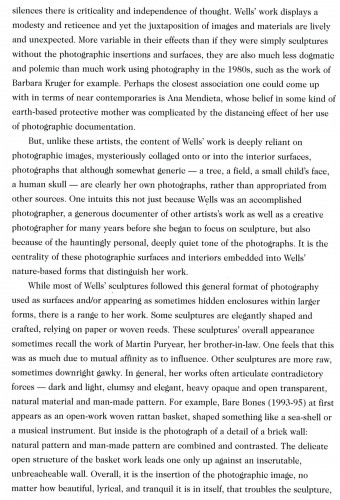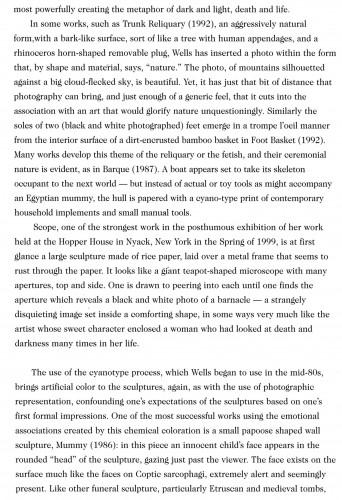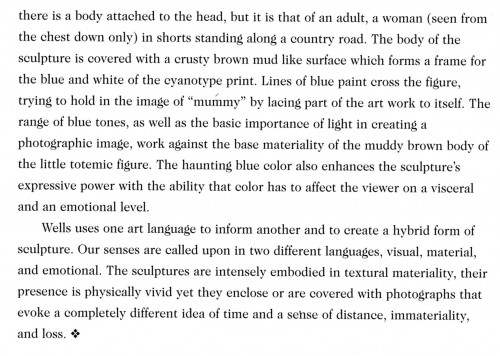This post is inspired by two aspects of the life of the artist.
First, friendships are very important to artists, perhaps because the nature of being an artist often includes necessary aloneness in the making, the thinking, or the ideological position, within an atmosphere of bracing but sometimes corrosive competitiveness so that it is essential to survival as a practicing artist and as a human being to have a core of friends who know and understand your work from its roots and who can suspend their tendencies towards competition enough to support and advise you.
As a teacher, I see my students start their professional lives in little clusters: graduating classes of MFA students or Skowhegan participants from a particular year move into neighborhoods together, share studios, curate each others’ work into shows, get each other jobs, support each others’ achievements. After a while career paths, changing ideologies, and private lives sever some of these bonds, but some continue to sustain for a lifetime and are one of the most precious resources one can have. One may strive for historical importance but at the bottom line one’s practice rests on the shoulders of a few friends who know, understand, and believe.
Second, many of my friends are, like me, not only artists themselves but they are the children and sometimes also the parents of artists: we are all responsible not just for our own work, which is work enough, but also their work, their memory, their reputation. If running your own career is difficult, maintaining the career of a dead artist is even harder, whether the artist was famous or not. For us, there is an ironic tension, a valiant sense of quixotic absurdity, between the necessity we feel to produce our work (I don’t mean the commercial necessity, I mean the creative necessity) and our unique awareness of the burden that any artist’s productivity imposes on the maker and those who end up responsible for it–perhaps contemporary artists currently engaged in post-medium, post-object social practices will leave behind a minimum of stuff but even very successful artists who are lucky enough to sell the majority of their work still often leave their heirs with very problematic estates.
Among my friends, while working on their own art work: in the past decade Mimi Gross has led the development of the Renee & Chaim Gross Foundation, while Susan Bee has exhibited her mother Miriam Laufer’s work, packed up her father Sigmund Laufer‘s work in printmaking, and supervised two exhibitions of the photography, and the publication of books and catalogs of her daughter Emma Bee Bernstein‘s photography and writing. Since 2001, I edited The Extreme of the Middle: Writings of Jack Tworkov, a project long nurtured by his daughters Helen Tworkov and Hermine Ford, I’ve begun archiving my parents Ilya Schor and Resia Schor‘s artwork, made The Tale of the Goldsmith’s Floor, a video documentary about their art produced for the conference “The Lure of the Detail,” in honor of my late sister Naomi Schor‘s signal 1987 book, Reading in Detail: Aesthetics and the Feminine, which with the help of many of my sister’s friends I was able to have brought back into print in 2007, all this while working on my own painting and writing as well as archiving it in order to create a comprehensive website.
I think also about all my parents’ friends in art school in Warsaw in the 1930s, a whole fertile world which perished, how my parents lost that initial loving context, and how much my mother tried to keep their names alive so that now I am the only one who remembers anything about them.
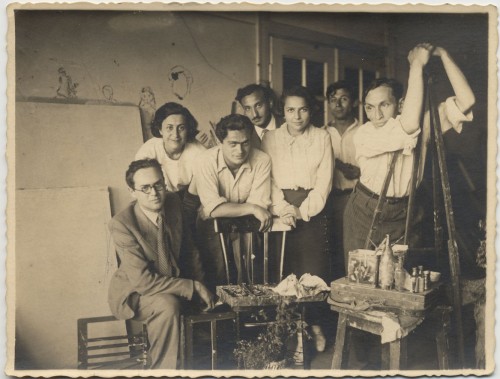
Art students at the Warsaw Academy of Fine Arts and friends, Warsaw c.1936: far left, a friend at whose house the group often gathered, last name Mackover (spelling uncertain); third from left with the burning blue eyes, Fishel Zylberberg (known also as Fiszel Zber, 1903-c.1942-43), a wood-engraver and from all accounts and appearance a magnetic and brilliant man. They all perished in the Shoa except for my father Ilya Schor, far right, leaning on the easel.
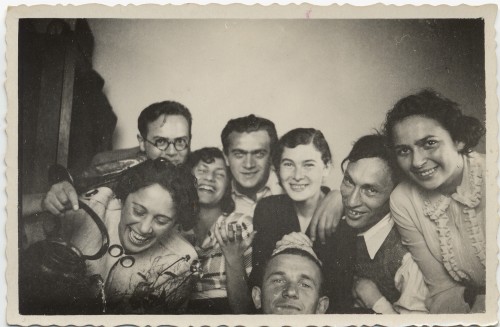
Young artists have fun in every generation, and perhaps young artists can imagine what it would mean if they suddenly lost those with whom they now share such companionship and joy. I think the artist Wermus is in the middle, bottom row but right this minute I'm not sure.
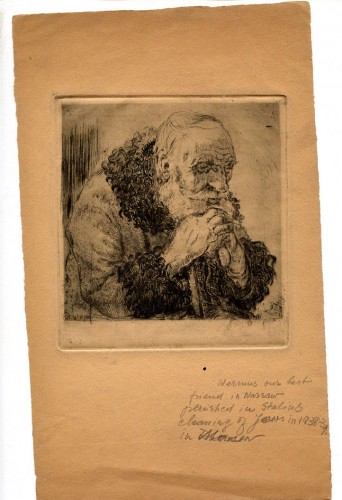
Etching from the 1930s by a friend of my parents, last name Wermus, Polish artist, killed in Russia before WWII
When I was packing this fall for my recent move, I found an etching upon which, sometime in the past for when I would find it in just this way, my mother had scrawled, “Wermus our best friend in Warsaw perished in Stalins cleaning of Jews in 1938-39 in Moscow.” So there was once a Polish printmaker called Wermus who went to Russia to work with a master engraver and who perished in Stalin’s purges just before the beginning of the Second World War. As far as I know he and his wife, who also died, had no children, and perhaps now I am the one living being who knows he once lived. The least I can do is make a tiny place for the memory of this artist here in the present.
I have unpacked every box that was moved from my loft on Lispenard Street and at the moment it looks like everything made it intact except for one group of, as luck would have it, absolutely crucial, irreplaceable archival material that for the present seems to have vanished, including all the black and white documentation of my work up until the 1990s, among which were many many photos and negatives by the sculptor and photographer Sarah Wells. I had scanned some of the pictures but that’s not the same as having her original prints and the negatives.
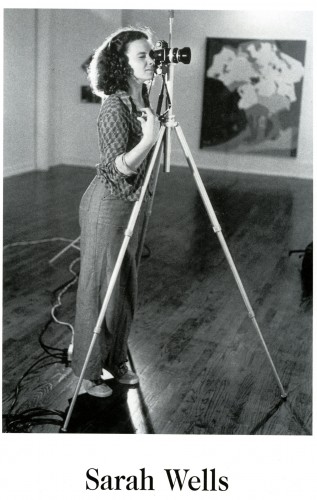
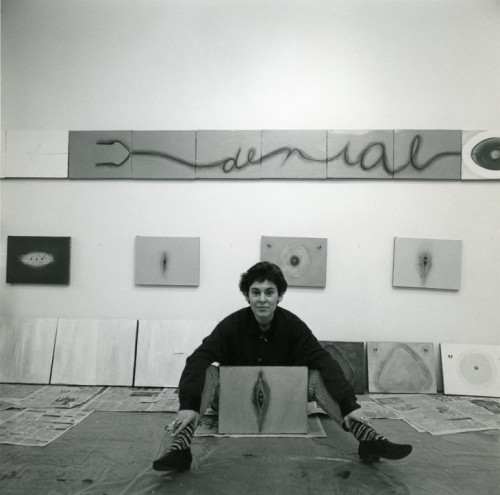
Sarah took this picture of me in 1993 at my studio at the Marie Walsh Sharpe Foundation Studios, then in Tribeca, with in the background some of my work, a segment of War Frieze in the wall, top,and some of my punctuation mark paintings.
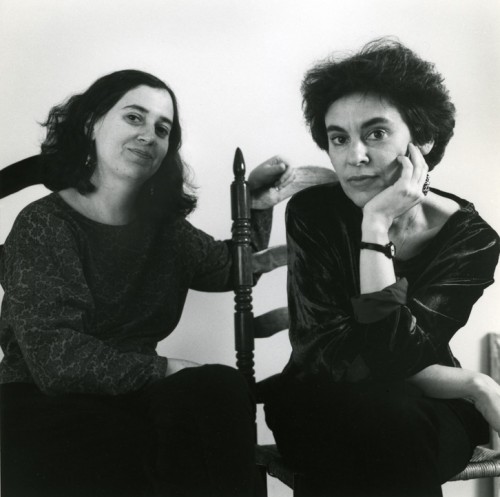
The editors of M/E/A/N/I/N/G, Susan Bee and Mira Schor, 1991, photo: Sarah Wells
Sarah was a dear friend, a lovely person, a very talented artist, and she made her living as an excellent photographer of other artists’ work. She has been much on my mind these past few weeks because of my realization that this material is, I hope only temporarily, lost, and especially today: we were born the same year, 6 days apart, and often celebrated our birthdays together. Her tragic early death from cancer came thirteen years ago today, on her 48th birthday.
In another instance of trying to celebrate the work of an artist, Sarah’s friends, among them Medrie MacPhee and Judd Tully published Sarah Wells, a catalog for a retrospective exhibition of her work held at the Edward Hopper House Art Center in Nyack, New York in 2000. I wrote the following essay for the catalog. Indicative of the special problems in maintaining histories in the digital age, I can’t find my Word files from that period so I have scanned my essay and a few reproductions from the catalog. I hope the text is legible enough.

